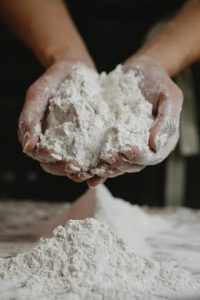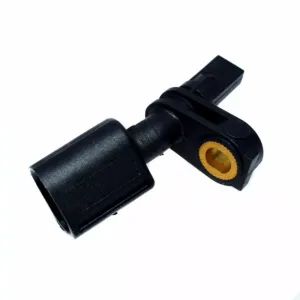Thickener is a kind of food additive, mainly used to improve and increase the viscosity of food, maintain the color, aroma, taste and stability of liquid food and jelly food, improve the physical properties of food, and make food lubrication Tasty feeling.
Thickener is a kind of food additive , mainly used to improve and increase the viscosity of food, maintain the color, aroma, taste and stability of liquid food and jelly food, improve the physical properties of food, and make food lubrication Tasty feeling. Thickeners can increase the viscosity of food or form gels, thereby changing the physical properties of food, giving food a sticky and suitable taste, and also have the functions of emulsifying, stabilizing or suspending. Thickeners are currently approved for use in China. There are 39 types of thickeners. Thickeners are all hydrophilic polymer compounds, also called hydrosols. According to their sources, they can be divided into two categories: natural and chemical synthesis (including semi-synthetic).

Thickener Overview #
Thickener is a rheological additive that can not only thicken the paint and prevent sagging during construction, but also give the paint excellent mechanical properties and storage stability. It is a very important additive for water-based coatings with low viscosity.
There are water-based and oil-based ones. In particular, water phase thickeners are more commonly used. The thickener is essentially a rheology additive. After adding the thickener, it can adjust the rheology, thicken the adhesive and sealant, prevent the filler from settling, give good physical and mechanical stability, and control the flow of the construction process. Denatured (no sagging, no dripping, no flying liquid during gluing), it can also play a role in reducing costs.
It is especially important for the manufacture, storage and use of adhesives and sealants. It can improve and adjust the viscosity to obtain stability, anti-settling, anti-seepage, anti-slip, thixotropic and other properties.
Food-grade thickener – vegetarian meat powder is a water-phase thickener, and it is also an oil-phase thickener. That is to say, it can absorb a large amount of water when it meets water, and can form a gel when it absorbs 30 times of water. When it absorbs water 50-100 times, it can become a paste. When it absorbs water 100-200 times, it can make the water body and the system containing protein and oil form a rich and strong texture. Vegetarian meat powder is extracted from marine algae and terrestrial plant Konjac. During the growth process, the algae will absorb carbon dioxide from the sea through photosynthesis, which is good for the environment. Adding vegetarian meat powder to food is also a way to love the earth and be green. way of survival.
Types of thickeners #
There are many types of thickeners available on the market, mainly including inorganic thickeners, cellulose thickeners, polyacrylates and associative polyurethane thickeners. Cellulose thickeners have a long history of use and come in many varieties, including methylcellulose, carboxymethylcellulose , hydroxyethylcellulose, hydroxypropylmethylcellulose , etc. They were once the mainstream thickeners. The most commonly used is hydroxyethylcellulose. Polyacrylate thickeners can basically be divided into two types: one is water-soluble polyacrylate; the other is homopolymer or copolymer emulsion thickener of acrylic acid and methacrylic acid . This thickener It is acidic itself and needs to be neutralized with alkali or ammonia to pH 8~9 to achieve the thickening effect. It is also called acrylic acid alkali swelling thickener. Polyurethane thickeners are newly developed associative thickeners in recent years. Inorganic thickener is a type of gel mineral that absorbs water and swells to form thixotropy. There are mainly bentonite, attapulgite, aluminum silicate, etc., among which bentonite is the most commonly used.
The thickeners actually used can be divided into two categories: water-phase thickeners and oil-phase thickeners according to their mechanism of action. There are many varieties of the former and quite few of the latter.
Thickeners are classified into the following categories:
(1) Inorganic thickeners (vapor phase silica, sodium bentonite, organic bentonite, diatomite, attapulgite, molecular sieve, silica gel).
(2) Cellulose ethers (methylcellulose, hydroxypropylmethylcellulose, sodium carboxymethylcellulose , hydroxyethylcellulose).
(3) Natural polymers and their derivatives (starch, gelatin, sodium alginate, casein, guar gum, chitosan, gum arabic , xanthan gum , soy protein gum, natural rubber , lanolin, agar).
(4) Synthetic polymers (polyacrylamide, polyvinyl alcohol, polyvinylpyrrolidone, polyethylene oxide, carbo resin, polyacrylic acid, sodium polyacrylate, polyacrylate copolymer emulsion, butadiene rubber, styrene-butadiene rubber, polyurethane, Modified polyurea, low molecular weight polyethylene wax).
(5) Complex organic metal compound (amino alcohol complex titanate).
(6) Printing thickeners include (dispersed thickeners, coating thickeners, active thickeners)
Thickening mechanism #
The thickening mechanism of cellulose thickeners is that the hydrophobic main chain associates with surrounding water molecules through hydrogen bonds, which increases the fluid volume of the polymer itself and reduces the free space for particles to move, thus increasing the viscosity of the system. The viscosity can also be increased through the entanglement of molecular chains, which is characterized by high viscosity under static and low shear conditions and low viscosity under high shear conditions. This is because at static or low shear speeds, the cellulose molecular chains are in a disordered state, making the system highly viscous; while at high shear speeds, the molecules are arranged in an orderly manner parallel to the flow direction and are easy to slide against each other, so the system Viscosity decreases.
The thickening mechanism of polyacrylic acid thickeners is that the thickener is dissolved in water, and through the homogeneous electrostatic repulsion of carboxylate ions, the molecular chain stretches from a spiral to a rod, thereby increasing the viscosity of the water phase. In addition, it also increases the viscosity of the system by building bridges between latex particles and pigments to form a network structure.
Associative polyurethane thickener AJ Reuvers conducted a detailed study on the thickening mechanism of associative polyurethane thickener. Hydrophilic groups and hydrophobic groups are introduced into the molecular structure of this type of thickener, giving it certain surfactant properties. When the concentration of its aqueous solution exceeds a certain concentration, micelles are formed, and the micelles and polymer particles associate to form a network structure, which increases the viscosity of the system. On the other hand, one molecule carries several micelles, which reduces the mobility of water molecules and increases the viscosity of the water phase. This type of thickener not only affects the rheology of the paint, but also interacts with adjacent latex particles. If this effect is too strong, it can easily cause latex delamination.
The inorganic thickener bentonite is a kind of layered silicate. It expands to form flocculent material after absorbing water. It has good suspension and dispersibility. It combines with an appropriate amount of water to form a colloid. It can release charged particles in the water and increase the thickness of the thickener. Large system viscosity.
Characteristics and selection of various thickeners
Cellulose thickeners Cellulose thickeners have high thickening efficiency, especially for thickening the water phase; they have few restrictions on coatings and coatings and are widely used; they can be used in a wide pH range. However, it has disadvantages such as poor leveling, more splashing during roller coating, poor stability, and susceptibility to microbial degradation. Because it has low viscosity under high shear and high viscosity under static and low shear, the viscosity increases rapidly after coating is completed, which can prevent sagging, but on the other hand, it results in poor leveling properties. Studies have shown that as the relative molecular weight of the thickener increases, the splatterability of latex paint also increases. Cellulose thickeners are prone to splashing due to their large relative molecular weight. This type of thickener achieves a thickening effect by “fixing water” and rarely adsorbs pigments and latex particles. The volume expansion of the thickener fills the entire water phase and squeezes suspended pigments and latex particles aside, easily causing flocculation. , so the stability is poor. Because it is a natural polymer, it is susceptible to microbial attack.
Polyacrylic acid thickeners Polyacrylic acid thickeners have strong thickening properties, good leveling properties, and good biological stability, but are sensitive to pH and have poor water resistance.
The association structure of associative polyurethane thickeners is destroyed under the action of shear force, and the viscosity is reduced. When the shear force disappears, the viscosity can be restored, which can prevent sagging during the construction process.
And its viscosity recovery has a certain hysteresis, which is conducive to film leveling. The relative molecular mass of polyurethane thickeners (thousands to tens of thousands) is much lower than the relative molecular masses of the first two types of thickeners (hundreds of thousands to millions) and will not contribute to splashing. The high water solubility of cellulose thickeners will affect the water resistance of the coating film, but the polyurethane thickener molecules have both hydrophilic and hydrophobic groups, and the hydrophobic groups have a strong affinity with the matrix of the coating film. , can enhance the water resistance of the coating film. Since the latex particles participate in the association, flocculation will not occur, making the coating smooth and glossy. Associative polyurethane thickeners have many properties that are better than other thickeners. However, due to its unique micellar thickening mechanism, those components in the coating formula that affect the micelles will inevitably affect the thickening properties. When using this type of thickener, the impact of various factors on the thickening performance should be fully considered, and do not easily replace the emulsion, defoamer, dispersant, film-forming aid, etc. used in the coating.
Inorganic thickener water-based bentonite thickener has the advantages of strong thickening, good thixotropy, wide pH value range, and good stability. However, since bentonite is an inorganic powder with good light absorption, it can significantly reduce the surface gloss of the coating film and act like a matting agent. Therefore, when using bentonite in glossy latex paint, attention should be paid to controlling the dosage. Nanotechnology has realized the nanonization of inorganic particles and also given some new properties to inorganic thickeners.
Commonly used thickeners include cellulose ethers and their derivatives, associative alkali swelling thickeners and polyurethane thickeners.
(1) Cellulose ether and its derivatives: Cellulose ether and its derivative thickeners mainly include hydroxyethyl cellulose, methyl hydroxyethyl cellulose, ethyl hydroxyethyl cellulose, and methyl hydroxypropyl cellulose. Cellulose, etc. Hydrophobically modified cellulose introduces a small amount of long-chain hydrophobic alkyl groups into the hydrophilic skeleton of cellulose, thereby becoming an associative thickener. Its thickening effect is comparable to that of cellulose ether thickeners with much larger relative molecular weights. quite.
(2) Alkali-swelling thickeners: Alkali-swelling thickeners are divided into two categories: non-associative alkali-swelling thickeners and associative alkali-swelling thickeners.
(3) Polyurethane thickener and hydrophobically modified non-polyurethane thickener: Polyurethane thickener is a hydrophobic group-modified ethoxy polyurethane water-soluble polymer and is a non-ionic associative thickener. The development of environmentally friendly associative polyurethane thickeners has received widespread attention. In addition to the linear associative polyurethane thickeners introduced above, there are also comb-shaped associative polyurethane thickeners.
Feature comparison #
The thickening agent has specific rheological properties. Propylene glycol alginate is preferred for acid resistance; guar gum is preferred for tone-increasing properties; The best; the gelling agar is stronger than other glues, but the gel transparency is especially high with carrageenan ; carrageenan is also better than other glues in terms of milk stability.
Basic chemical composition #
For most thickeners, their basic chemical composition is simple sugars and their derivatives. Common monosaccharides include glucose, glucuronic acid, mannuronic acid, rhamnose, pregalactose, guluronic acid, galacturonic acid, galacturonic acid, etc. For example, hydroxypropyl distarch phosphate is a starch derivative; the main component of gelatin is protein; and pectin is a type of dietary fiber .
Food thickeners are macromolecular substances, and most of them are not digested and absorbed by the human body after entering the human body, such as pectin, guar gum, carrageenan, etc., and their functions are similar to dietary fiber. A few thickeners, such as gelatin, can be digested by the human body, but the main component of gelatin is protein. After digestion, it will be decomposed into amino acids, and then participate in the metabolism of the human body, and is a nutrient that can be absorbed and utilized.
Practical application #
Thickeners are also called gelling agents, and when used in food they are also called pastes or food glues. It can increase the viscosity of the material system, keep the material system in a uniform and stable suspension or turbid state, or form a gel. Widely used in food, coatings, adhesives, cosmetics, detergents, printing and dyeing, rubber, medicine and other fields. In pigment printing, the pigment printing paste is composed of thickener, water, adhesive and paint paste. Under the action of printing mechanical force, the printing paste generates shear force, causing the viscosity of the printing paste to increase instantly. The amplitude decreases; when the shear force disappears, it returns to its original high viscosity, making the fabric printing outline clear. This viscosity change that occurs with changes in shear force is mainly achieved by thickening agents. In latex paint manufacturing, thickeners play a multi-faceted role in coordinating the thickening, stabilization and rheological properties of latex paint. During the latex polymerization process, it is used as a protective colloid to improve the stability of the emulsion; during the pigment and filler dispersion stage, it increases the viscosity of the dispersed material to facilitate dispersion; during the storage and transportation process, it improves the coating stability and freeze-thaw resistance to prevent pigments, Fillers sink to the bottom and agglomerate; adjust the viscosity of latex paint during construction and show good thixotropy, etc. Adding a few parts per thousand of food thickener to food has the functions of gelling, film-forming, water-holding, suspending, emulsifying, foam stabilizing and lubrication. It plays a very important role in the color, aroma, taste, structure and relative stability of liquid food or frozen food.
Thickeners are mostly hydrophilic polymer compounds and are classified according to their sources into animal, plant, mineral, synthetic or semi-synthetic types. Simply divided into two categories: natural and synthetic. Most natural products are produced from plants and seaweeds containing polysaccharide viscous substances, such as starch, pectin, agar, gelatin, seaweed lipid, carrageenan, dextrin, tragacanth, polysaccharide derivatives, etc.; Synthetic products include cellulose derivatives such as methylcellulose and carboxymethylcellulose, starch derivatives, casein, sodium polyacrylate, polyethylene oxide, polyvinylpyrrolidone, polyvinyl alcohol, low molecular polyethylene wax, and polypropylene Amide etc.
Thickeners commonly used in beverage production and used as emulsion stabilizers mainly include sodium carboxymethyl cellulose, propylene glycol alginate, carrageenan, xanthan gum, pectin, guar gum, and locust bean gum. wait.

 April 1, 2024
April 1, 2024 










